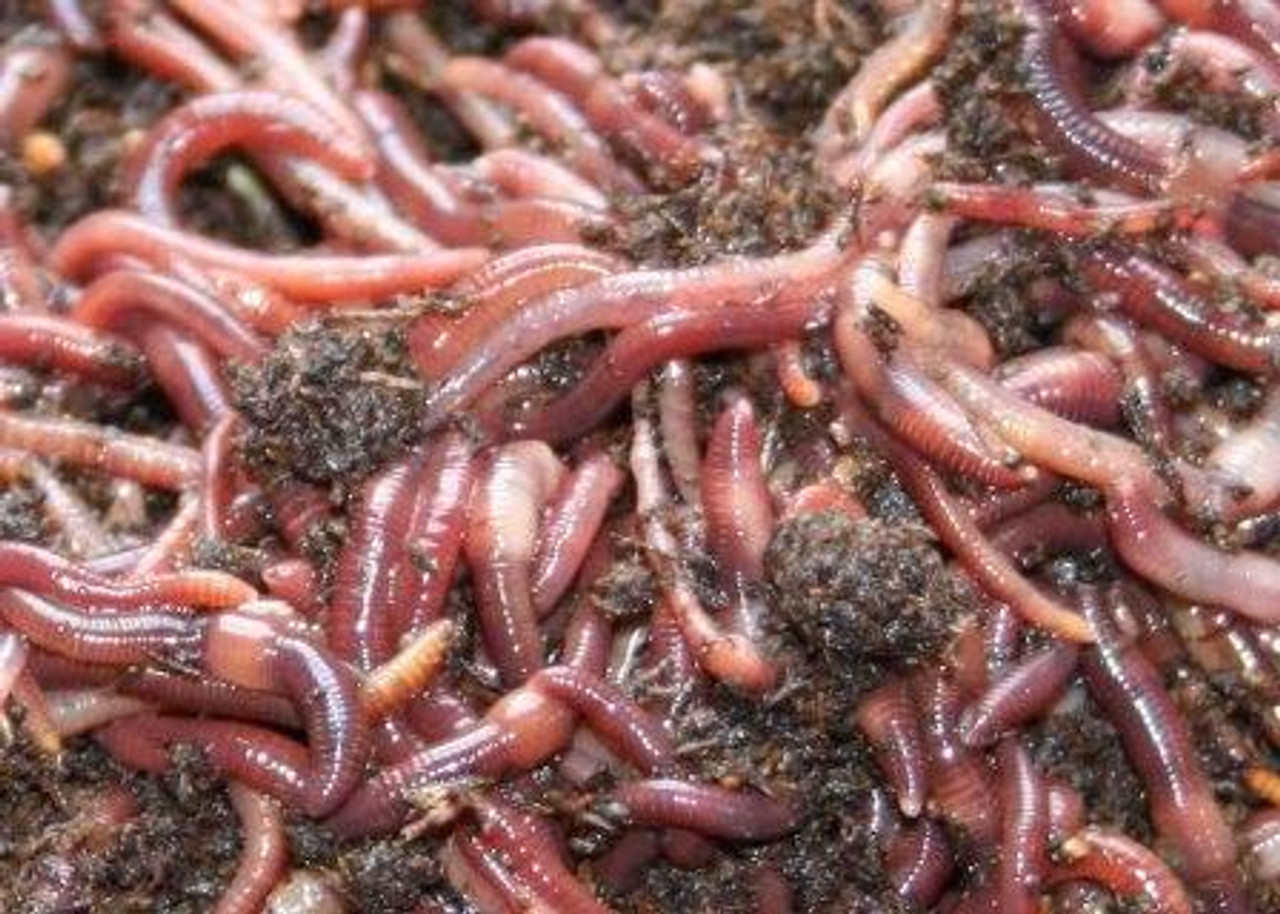Comprehending the Perks of Red Wiggler Composting: Just How This Efficient Approach Changes Organic Waste Into Nutrient-Rich Dirt Amendments
Red Wiggler composting, employing the varieties Eisenia fetida, offers a compelling technique to organic waste monitoring, transforming kitchen area scraps and yard debris right into beneficial dirt changes. This method not just boosts soil fertility however likewise addresses pushing ecological worries, consisting of garbage dump waste reduction and greenhouse gas emissions.
What Are Red Wigglers?
Red wigglers, scientifically understood as Eisenia fetida, are a species of earthworm that play a critical duty in vermicomposting systems. These worms are characterized by their reddish-brown color, segmented bodies, and a distinct capability to grow in organic-rich environments, making them perfect for composting applications - Red Wiggler Composting. Unlike their garden-dwelling equivalents, red wigglers favor to inhabit the upper layers of soil, where rotting matter is bountiful
Usually determining in between 3 to 4 inches in length, red wigglers have a high reproductive price, enabling them to increase quickly under optimal conditions. They possess an one-of-a-kind digestion system that allows them to process natural waste effectively, transforming it right into nutrient-rich castings, which are extremely helpful for plant development.
Their tolerance to varying wetness degrees and temperature level ranges better enhances their energy in vermicomposting configurations, making them a favored choice amongst composting lovers. Additionally, red wigglers are aerobic microorganisms, which demands a well-aerated composting atmosphere, making certain efficient disintegration. Recognizing the biological traits and actions of red wigglers is necessary for maximizing their use in sustainable waste monitoring techniques.

Advantages of Vermicomposting
Taking advantage of the power of vermicomposting offers a plethora of agricultural and ecological benefits. It considerably reduces natural waste in landfills, consequently lessening methane emissions, a powerful greenhouse gas. By diverting food scraps and lawn waste to vermicomposting, we support an even more sustainable waste administration system.
Additionally, vermicomposting improves soil wellness. The castings produced by red wigglers are abundant in vital nutrients, microbes, and enzymes, boosting dirt structure and fertility. This nutrient-rich change promotes durable plant development and increases water retention, decreasing the demand for chemical plant foods.
Additionally, vermicomposting fosters biodiversity in the dirt environment. The intro of helpful bacteria from worm castings help in condition reductions and nutrient cycling, producing a healthier setting for plants.
Financially, vermicomposting lowers the costs connected with chemical inputs and garbage disposal. Gardeners and farmers can grow high-quality produce at reduced expenses, adding to food safety and security and sustainability.
Just How to Begin Composting
Starting a composting endeavor can be a straightforward and fulfilling process. This will aid keep a balanced temperature level, crucial for the composting process.
Collect organic products such as kitchen scraps, yard waste, and shredded paper. Go for a well balanced mix of 'eco-friendly' materials, high in nitrogen (e.g., fruit scraps, coffee grounds), and 'brown' products, rich in carbon (e.g., dried out leaves, cardboard) A dig this ratio of approximately 2:1 environment-friendly to brownish products is excellent.
Begin layering your materials, guaranteeing sufficient air flow by turning the pile consistently. This promotes cardiovascular decay, speeding and lowering smells up the procedure. Display moisture degrees; the garden compost needs to seem like a wet sponge but not excessively damp.
Nutrient Profile of Vermicompost
Composting, particularly with red wigglers, produces a nutrient-rich item understood as vermicompost. Furthermore, it supplies micronutrients like iron, magnesium, and calcium, cultivating durable plant advancement and improving dirt health and wellness.
The microbial activity present in vermicompost further improves its account, presenting useful germs and fungi that promote nutrient schedule and uptake in plants. This organic element aids in subduing plant conditions and boosting soil structure, bring about boosted water retention and aeration.

Environmental Impact of Composting
The ecological impact of composting, specifically with making use of red wigglers, is diverse and extensive. This approach dramatically reduces the quantity of natural waste sent out to garbage dumps, which subsequently reduces greenhouse gas exhausts, specifically methane-- a powerful contributor to climate modification. By drawing away organic materials from land fills, red wiggler composting not just assists minimize environmental deterioration yet also promotes lasting waste management practices.

In addition, composting adds to carbon sequestration, as the process captures carbon dioxide from the environment and stores it in the soil. This natural process help in combating environment adjustment while improving the dirt - Red Wiggler Composting. On the whole, red wiggler straight from the source composting offers a sensible, eco-friendly solution for waste management and environmental sustainability, promoting healthier ecosystems and a more lasting future
Verdict
In verdict, Red Wiggler composting serves as an effective approach for converting natural waste into beneficial dirt changes. The process not just enhances dirt fertility and structure yet also minimizes environmental problems linked with waste disposal.
Red Wiggler composting, using the types Eisenia fetida, presents a compelling approach to organic waste monitoring, transforming kitchen scraps and lawn debris into beneficial soil modifications. Unlike their garden-dwelling counterparts, red wigglers like to inhabit the top layers of dirt, where rotting matter is plentiful.
The spreadings produced by red wigglers are abundant in pop over here essential nutrients, microorganisms, and enzymes, boosting soil structure and fertility. The nutrient-rich results of red wiggler task improve soil framework, rise water retention, and promote biodiversity within the soil ecological community.In conclusion, Red Wiggler composting serves as a reliable technique for transforming natural waste into important dirt modifications.